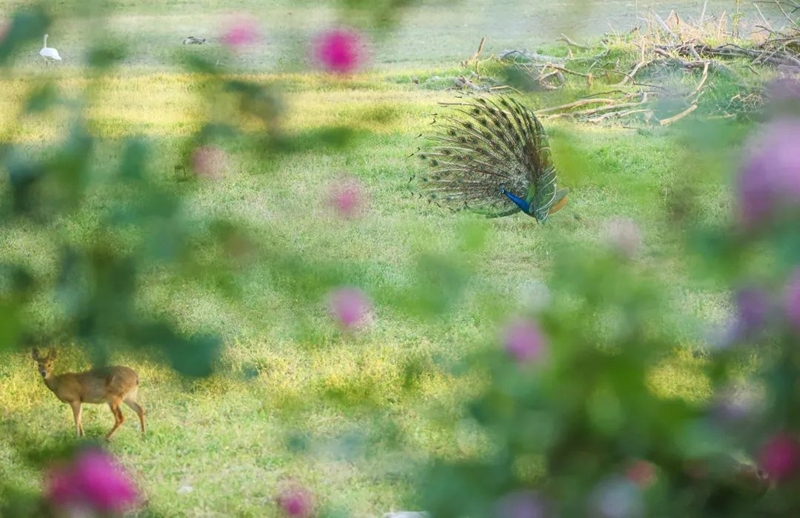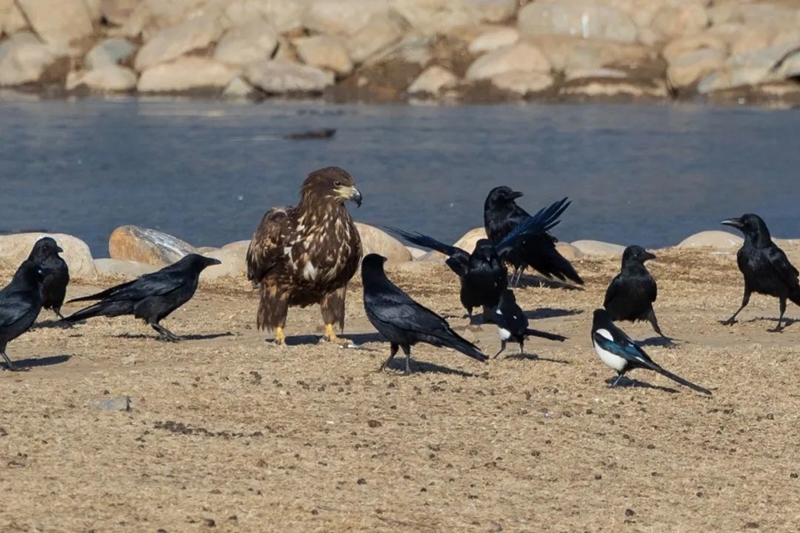Biodiversity monitoring system in Elk Park 'comprehensive, scientific'
The Beijing Biodiversity Conservation Research Center has announced that after 17 years of uninterrupted monitoring of wildlife in and around the Nanhaizi Elk Park, the center has established a scientific, comprehensive, and long-term biodiversity monitoring system.
In 2022, the wildlife monitored in the Elk Park mainly consisted of birds, with a total of over 1.34 million detections, involving 18 orders, 43 families, 92 genera, and 170 species.

Peacocks and elks roam in the Nanhaizi Elk Park. [Photo/beijingetown.com.cn]
Among them, there were four species of national first-class protected animals (yellow-breasted bunting, white stork, oriental stork, white-tailed eagle), 27 species of national second-class protected animals (such as red-throated loon and reed parrotbill), two species classified as Critically Endangered by the International Union for Conservation of Nature (yellow-breasted bunting, white stork), two species classified as Vulnerable (swan goose, red-crested pochard), and three species classified as Near Threatened (reed parrotbill, falcated duck, ferruginous duck).
Fifteen new bird species were newly recorded, including bank swallow, common shelduck, mute swan, whooper swan, tundra bean goose, white stork, Chinese Goshawk, white-tailed eagle, and others.

A white-tailed eagle feeds beside the lake in the park. [Photo/beijingetown.com.cn]
"Compared to recent years, the number of bird species in the Elk Park area has significantly increased, and the monitoring volume shows an upward trend," according to the head of the park.
It is worth mentioning that the staff at the Elk Park also discovered some protected plants in the area.
Among them, there are two species of nationally protected plants, one being the artificially cultivated ginkgo, a nationally first-class protected plant, and the other being the wild soybean, a second-class protected plant. There are also five species of second-level key protected plants in Beijing.

A mute swan swims in the park. [Photo/beijingetown.com.cn]
The Elk Park will continue to monitor flora and fauna. This includes monitoring terrestrial mammal and reptile species to observe changes in urban land ecological corridors. They will also continue to watch bird species and population trends, with a focus on migratory birds and the status of key protected species.
Additionally, a new round of surveys and monitoring will be conducted on vascular plants to determine changes in plant species composition. Monitoring of aquatic algae and soil microorganisms in the area will also be carried out to expand the biodiversity database and provide baseline data for future research.

